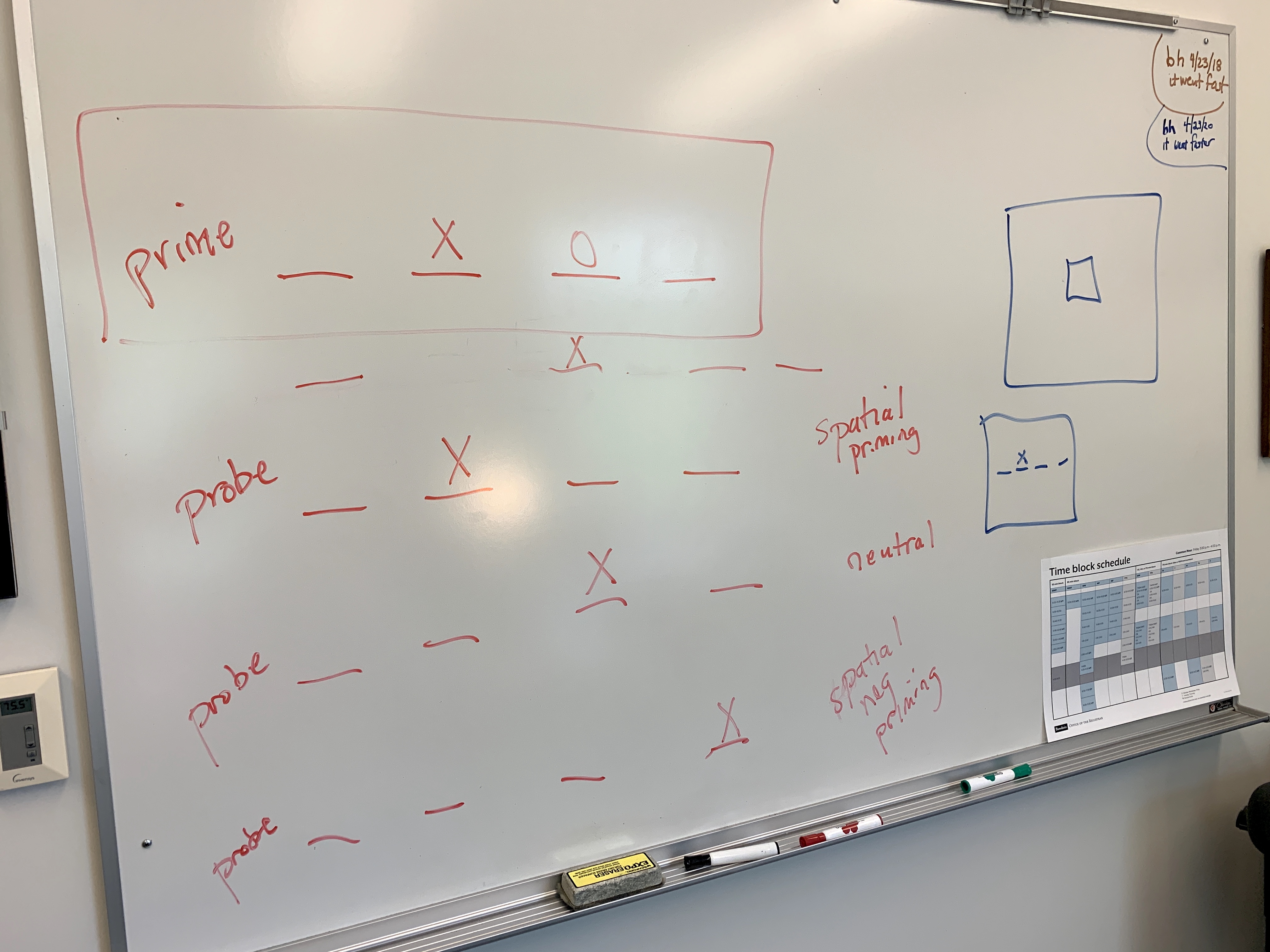Cognitive Psychology Professor Makes Curious Find About How We Pay Attention
By Rebecca Goldfine
To understand the significance of this finding, it's helpful to know what cognitive psychologists have already discovered about attention. For people to consciously attend to a thing for a specific outcome—say, to drive a car or to listen to a professor teach about attention—their minds need to do a series of important processes. Some of processes facilitate their attentiveness to the relevant information or stimuli. Others, meanwhile, suppress or inhibit unhelpful information.
More specifically, researchers have found that our cognitive systems suppress our awareness of both objects and of locations in space in order to to zero in on whatever it is we want to be closely considering.
Now, in a new article published in the Journal of Experimental Psychology, Slowiaczek and her research partner, Todd Kahan of Bates College, argue that along with objects and space, time plays a role in the mechanism of selective attention. That is, as we attend to something to process and understand it, our minds appear to suppress or inhibit some moments in time.
To explain her finding, and to describe the history that led up to it, Slowiaczek makes good use of the whiteboard in her office. On it, she draws the previous experiments that laid the groundwork for the phenomenon she and Kahan have found, one they call "temporal negative priming."

Over the last forty years, scholars have identified what is known as priming—which helps set our minds up to process information quickly—and its counterpart, negative priming. Negative priming is when our awareness of irrelevant objects, information, and background distractions is suppressed to help us focus on whatever it is we want to pay attention to. Negative priming is of particular interest to researchers of conditions like schizophrenia and attention-deficit disorder.
A critical moment in this field came about when cognitive psychologist Tram Neill found that we don't just suppress irrelevant objects, as suggested by Steve Tipper, we also inhibit our spatial awareness of locations not helpful to our attempts to fixate on something. For example, if you are searching for an object on your computer screen and find the object in the lower right hand corner and an irrelevant object in the lower hand corner, on a subsequent search you will likely favor looking to the lower right of the screen (i.e., the lower left location might be deemed irrelevant and suppressed). This he termed "spatial negative priming."
So, "what Todd and I did was ask a new question," Slowiaczek said. "If there is this type of negative priming that you see in the identity of objects and that you also see in space, then is there also the suppression of moments in time when you're attending to things?"
The Experiment Behind the Discovery
To find their answer, Slowiaczek and Kahan created a lab-based experiment modeled after the previous spatial experiments conducted by Tram Neill.
In the first part of their experiment, called the prime, they flashed a series of four boxes one after the other in the center of a computer screen in front of a subject. One of these boxes contained an X. The subject was asked to identify the position of the X in the sequence of flashing boxes: that is, in box 1, 2, 3, or 4. Importantly, one of the boxes also contained a "distracter," the letter O.
The prime was followed with a second series of boxes: the probe. Again, Slowiaczek and Kahan quickly flashed four boxes in front of the subjects, one of which contained an X. None of the boxes contained an O. If the X was in the same box as in the prime, the subjects responded quickly in identifying the position of the target box in the sequence.
On the other hand, if the target X was in the box that had in the prime contained the distracting letter O, the respondents were slower to respond. This indicates the mind had, in trying to pay close attention to the target X, suppressed the O box, and thus, also the moment in time it had flashed in front of them.
Slowiaczek and Kahan also did this experiment as an auditory exercise, using a bird chirp as the target noise and a dog bark as the distracting noise. So, for example, a subject might hear a series of four sounds: beep, beep, chirp, bark, in the prime. And in the probe, they might hear, beep, beep, beep, chirp. If the chirp fell into the moment in time that had previously been filled with the bark, they were slower to identify it.
What Does It Mean?
"I think that the notion of inhibiting or suppressing information is happening across different domains, including time," Slowiaczek said. "And we're doing that to try to control what actually needs to be processed. To function in the world, you need to inhibit or suppress irrelevant stuff."
But exactly why we inhibit specific moments in time as we hone in on whatever we want to focus on is not understood. Slowiaczek and Kahan wonder whether it might have something to do with the formation of memories. "We started to think it is a memory issue rather than an attention issue," she said.
They're currently trying to design an experiment that could test this theory after the one they worked on this summer came up with no conclusive results.
"Now we're thinking about what we can do differently," she said. "I do think our findings are a memory-based effect, but we have to think about how to show that."
Above, Louisa Slowiaczek demonstrates an experiment she and her collaborator designed and used this summer to test whether the suppression of moments of time in the act of paying attention has to do with memory formation.
In the test, they gave subjects the auditory experiment they had success with earlier, in which subjects make note of a bird chirp in a sequence of four sounds. But this time, they paired the sequence of sounds with one of two backgrounds, either a cityscape or a seascape. (The background noises of the two scenes created a more "immersive" experience.") Sometimes the backgrounds stayed the same for the prime and the probe, and sometimes they differed.
"If the way you're processing these sounds is within the context of a memory event, then when the backgrounds match in the prime and in the probe, we should get a bigger effect. When the context matches, we should get a bigger temporal negative priming," Slowiaczek said. This logic is based on previous memory literature that shows when background context matches, memory effects are boosted.
"But that didn't happen," she continued, perhaps because the task was too challenging, or because subjects were paying more attention to the background than to the primary task. "We found temporal negative priming isn't influence by the context at all—the context had no effect. Boy, were we disappointed."



